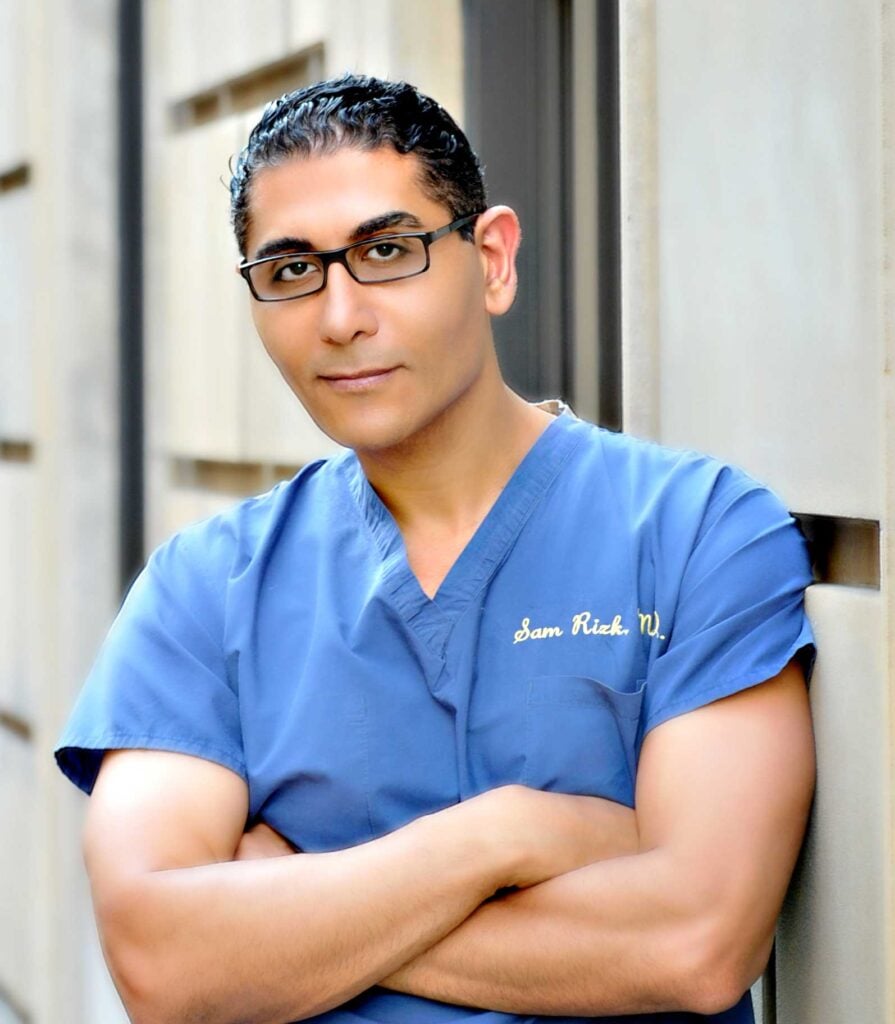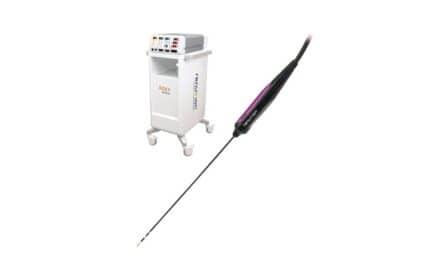Facial plastic surgeon Sam Rizk, MD, FACS, explains how the endoscopic midface lift, or ponytail facelift, is reshaping facial rejuvenation strategies for younger patients seeking early intervention with discreet results.
More patients in their 30s and 40s are turning to surgical options like the endoscopic midface lift to address early signs of aging, marking a shift toward preventative, structural facial rejuvenation. In this interview, double board-certified facial plastic surgeon Sam Rizk, MD, FACS, shares how he tailors the procedure to younger patients seeking subtle, scar-concealed results—and why it’s not a replacement for a deep-plane facelift. Based in New York City, Rizk discusses patient selection, longevity expectations, and how this minimally invasive technique is shaping surgical workflows and long-term patient relationships in modern aesthetic practices.

Plastic Surgery Practice: You are seeing increased demand for the ponytail facelift, or endoscopic midface lift, in your practice. What technical elements set your approach apart from others performing this procedure?
Sam Rizk, MD, FACS: A ponytail lift is essentially a scarless approach to facial rejuvenation—but it can still involve the deep plane technique. The difference is in the incision placement: instead of being hidden around the ears like in a traditional deep plane facelift, the scars are concealed within the temples. Candidates for a ponytail lift are typically about a decade younger than those seeking a traditional deep plane facelift. They often have mild to moderate midface laxity and early jowling, but minimal excess skin in the face or neck. The goal isn’t to remove skin—it’s to subtly reposition underlying tissue for a more lifted, refreshed look.
PSP: Are you seeing a change in the age or goals of patients seeking facial rejuvenation, particularly with the rise in interest in the ponytail facelift?
Rizk: Yes and no. We used to think of facelifts as a way to turn back the clock, but now it’s increasingly seen as preventative. In the last 5 years alone, the average age of my patients has shifted from 50/60 to 40, even late 30s. Much of that is driven by what I call filler fatigue—patients who are tired of temporary fixes and want something more structural and lasting.
The ponytail facelift has played a role in that shift because it appeals to a younger demographic, as noted above. But facelift candidacy isn’t solely about age. Factors like sun damage, smoking, genetics, or GLP-1 weight loss medications—which can accelerate facial volume loss and skin laxity—may push someone into needing a deeper, more comprehensive lift sooner. So while it’s true that more patients in their 30s and 40s are opting for procedures like the ponytail facelift, I always evaluate the individual, not the birthdate. If the signs of aging are there, and the patient is ready for something more lasting, they’re a candidate regardless of age.
PSP: How do you counsel patients on the longevity and limitations of the endoscopic midface lift compared to more comprehensive procedures like the deep-plane facelift?
Rizk: I’m very clear about what I can—and can’t—do (in most cases, it’s more like will or won’t do). An endoscopic lift is an excellent option for the right candidate: someone with early to moderate descent in the cheeks or under-eye area, good skin quality, and minimal jowling or neck laxity. For those patients, it offers a very natural, lifted result with minimal scarring and a faster recovery.
That said, it’s not a substitute for a deep-plane facelift. The deep-plane approach addresses more advanced aging by releasing and repositioning deeper facial structures from the midface down to the jawline and neck. It’s a more comprehensive procedure with longer-lasting results—often a decade or more—whereas an endoscopic midface lift may last 5 to 7 years, depending on the patient’s aging process and lifestyle.
I always tailor the discussion to each patient’s anatomy and goals, but my philosophy is to be honest about limitations. I never, ever overpromise on what a smaller lift can deliver. It’s all about matching the right procedure to the right moment in a patient’s aesthetic journey.
PSP: What does your consultation process look like when determining if someone is a good candidate for an endoscopic midface lift versus another approach?
Rizk: My consultations are all about precision and personalization. I start with a detailed facial analysis, often using 3D imaging to assess the skeletal support, fat volume, skin elasticity, and soft tissue descent—especially in the midface and lower eyelid region.
The ideal candidate for an endoscopic midface lift is someone with early to moderate sagging in the cheeks or under-eye hollows, but without significant skin excess. But if there’s more advanced aging, skin laxity, or jowling, I may recommend a deep plane facelift or a combination approach for more comprehensive rejuvenation.
At the end of the day, I tailor every surgical plan to the individual’s anatomy, aging pattern, and long-term goals. The consultation is where we map all of that out together.
PSP: Has the addition of the endoscopic midface lift changed how you structure your practice—from workflow to patient retention or referrals?
Rizk: Good question. Because it’s less invasive and has a quicker recovery than a traditional facelift, this procedure attracts a younger demographic—patients in their late 30s to late 40s—who are just starting to notice volume descent or early sagging. That’s created a longer runway for patient relationships, as we can now intervene earlier with subtle surgical techniques that complement noninvasive treatments.
From a workflow standpoint, it has streamlined certain cases. The shorter operative time and reduced downtime make scheduling more efficient, and patients often return sooner for follow-up treatments like skin tightening, fat grafting, or maintenance injectables. It’s also strengthened referrals. Patients are excited by the natural, refreshed results I’m known for and the fact that the incisions are virtually invisible, which makes them more likely to share their experience. It doesn’t hurt that most of my patients are back to work in a week and camera ready in two.
PSP: What trends do you see shaping the next phase of facial rejuvenation, both in terms of surgical technique and patient expectations?
Rizk: What’s truly advancing the field is a deeper, more anatomical approach to surgery—procedures like the deep plane facelift and preservation rhinoplasty, which focus on restoring natural structure rather than just removing or reshaping tissue. These techniques respect the deeper layers of the face and nose, leading to longer-lasting, more natural outcomes.
On the technology side, the integration of 3D imaging, ultrasonic tools, and high-definition endoscopy is elevating the precision of what we can achieve—especially in complex or revision cases. PSP
Opening photo: ID 172617647 © Martinmark | Dreamstime.com





